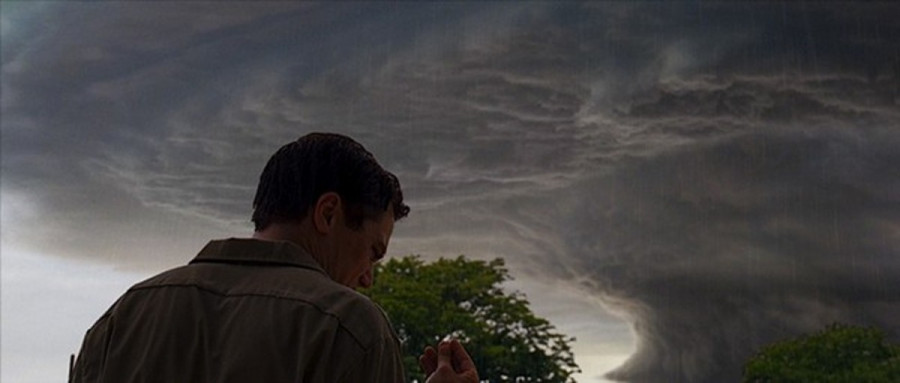Frame to Frame
The Miserably Glorious Apocalypse
Saying that the state of current world affairs is grim would be an understatement, so it’s no wonder then that the apocalypse has become a popular and contemporary theme in cinema.
Three films that have been making festival rounds since Cannes and Berlin, and sparking a lot of interest along the way, have made a stop at Montreal’s Festival du Nouveau Cinema. A Hungarian arthouse legend, a controversial Danish icon and an indie American up-and-comer have each made a film that, in theory, should be worlds apart from each other. In practice, there is a common denominator: an apocalyptic vision of the present, with bleak prospects for the future.
Let’s start with the legend. If there’s one filmmaker who has never wavered in style or tone in the past two decades, it’s Bela Tarr. You either love his films or hate them, there’s no place in between, and though his fanbase is small compared to many other art-house directors, it is defiantly loyal. So it is a bittersweet event for a fan, like this writer, to walk into Tarr’s latest film The Turin Horse knowing that it will be the director’s last.
Taking a little known fact about a moment in Friedrich Nietzsche’s life, when the philosopher flung himself on a horse that was being whipped for not moving, Tarr decides to fully embrace the existential implications of the horse’s stagnant state. It belongs to a man and his daughter, and the film deals with the miserable poverty these three characters are living in, an atmosphere that can be called nothing else but apocalyptic.
Lars von Trier’s version is much like his own personality: cryptically funny and in-your-face. The director’s own battles with depression are no secret and the scars were evident in 2009’s fest shocker Antichrist but with Melancholia he takes it one step further. Justine (Kirsten Dunst) is newly married to Michael (Alex Skaarsgard) and the wedding reception is organized by Justine’s older sister Claire (Charlotte Gainsbourg), paid for by her husband John (Sutherland).
The trouble is Justine is severely depressed and can’t seem to shake off the feeling that something bad is going to happen. For a lot of directors, that kind of premise would have been enough. For von Trier though, the premise feels like a forced creation that exists only to make room for what he really wants to focus on: a planet called Melancholia is on course to collide with Earth and destroy all life in the process.
And finally, we have a version of the inevitable end from an American. Low budgeted yet powerfully acted, Jeff Nichols’ Take Shelter has your average blue-collar American Joe embodied in Curtis (Michael Shannon) who is content to be living a quiet suburban lifestyle, providing for his wife Samantha (Jessica Chastain) and little girl Hannah (Tova Stewart). The family is just barely keeping their head above the water of financial struggles that plague society but when Curtis starts to get affected by his recurring nightmares things take a turn for the worse.
A vision of an impending storm of Biblical proportions haunt Curtis and he becomes obsessed with building a storm shelter, jeopardizing his family’s stability in the process.
Watching the three films practically back-to-back is a fascinating experience. Tarr’s use of the long take (his film is two-and-a-half hours long in a mere 30 takes) tests the patience and will likely not create new fans, but, if you allow yourself to be fully absorbed, shows a whole world contained around a small village house. The music from Tarr’s regular collaborator Mihaly Vig is as important to the film as the merciless wind that represents the nothingness or the camera that swerves and carefully observes the actions of these two people, and their horse. It is at once heartbreaking and grandiose, much like the whole film, and is one of the main factors that make The Turin Horse an extraordinary experience.
With von Trier’s ode to depression, it is the cinematography of Manuel Alberto Claro (not Kirsten Dunsts’ one-note performance) that elevates it from being an average film. The images that open the film, and the final shot, are the stuff movie magic was made for. Notable too is the humor, whether it’s John’s obsession with money, the wedding planner (scene stealing Udo Kier) not looking at the bride who ruined his wedding or Michael’s complete daftness, Melancholia brings out the laughs.
Though the visuals are mighty impressive in Take Shelter, especially considering the budget, it is the acting that stands out in this one. Michael Shannon is known for being great when playing crazy (watch Revolutionary Road as evidence) but his Curtis is the most sympathetic he’s ever been. The slow-burning paranoia that builds up to a terrific climax in a lunch-room, followed by a shattering moment in the shelter, is Shannon’s best work to date. Jessica Chastain, who has been omnipresent this year (she’s been in seven films released in 2011), is outstanding as the wife who needs to keep everything under control.
All three have a precise motif for their cataclysmic settings: Tarr’s is one of utter misery, von Trier’s is (you guessed it) depression and Nichols’ is a blend of paranoia and schizophrenia. Tarr’s apocalypse is the more subtle one, never pretending to show you more than the bare necessities, while von Trier forces the idea by naming a planet after it. Take Shelter would stand somewhere in the middle of it all, hallucinations of a storm made into a metaphor that represent the real reason behind the world’s possible demise, namely financial burden.
All three films are worthy to be seen and have unique attributes; however, only one is an outright masterpiece that shows the effective way humanity can be captured by a camera. A depiction of an apocalyptic world that could very well foreshadow the real end from a master who will be sorely missed.
http://killerbabytomatoes.files.wordpress.com/2011/10/frame_tarr.jpg



_600_832_s.png)
